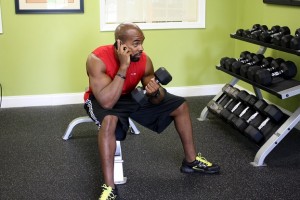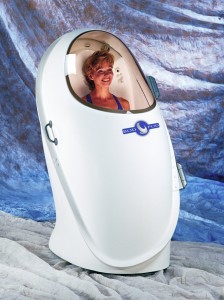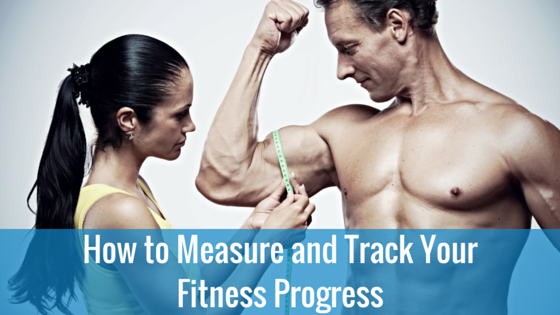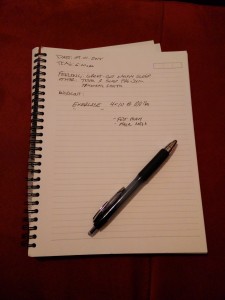If you want to make the biggest improvement you can when it comes to fitness, whether that be a fat loss, or muscle gaining goal you need to start tracking and measuring. I wasted 10 years of training not using this advice. As soon as I started tracking what I teach you how to track all of my numbers shot up. I got stronger, leaner, and felt better mentally.
So let’s get into it. What exactly should we be measuring.
tl;dr: Measurement and consistency will help you reach your goals more quickly.
Measure Everything
- Take body measurements every 2 weeks. Biceps, Chest, Waist, Quads.
- Take pictures every week to 2 weeks.
- Use myfitnesspal or a journal to record everything going into your mouth.
- Use fitocracy or a journal to record all of your training.
- Weigh yourself once a week if you must.
“Measurement is the first step that leads to control and eventually to improvement. If you can’t measure something, you can’t understand it. If you can’t understand it, you can’t control it. If you can’t control it, you can’t improve it.”H. James Harrington
If you’re not consistently measuring your progress, you’re not improving as much as you possibly could.
What to track:
A – Let’s start with circumference measurements.
These will give you a pretty clear picture of progress month over month. If you are trying to lose fat around your midsection, gain muscle in your legs and arms, or both.
If you don’t have someone that can help you take measurements you can get a self measuring tape: here
You can also go to any craft store and get a cheap measuring tape although a little more difficult to measure yourself. If you have a gym membership, most gyms will help you out as well. If not I suggest going to a different gym.
You’ll want to take measurements at each of these spots and write them down:
- Biceps (let your arm relax to the side and take the measurement on the largest part of your bicep, alternatively you can flex and take the measurement on the peak).
- Chest (measure around the nipple line or just under)
- Waist (the narrowest part usually just above the navel)
- Quads/thighs (6 inches above the knee cap, or the largest part of your quads).
Optional: You can also measure your calves (where the muscle is the biggest), your hips (hips together, largest part of the butt), and even your neck. To me the more measurements the better, but get those listed above as a bare minimum.
When it comes to measuring you need to be consistent and accurate so that you’re not moving the tape measure up or down an inch or two, this can dramatically change the results. This is why I prefer to measure at the largest part of the muscle. Assuming you’re training that point of your muscle will grow (or at least remain the largest part)
How often:
Take these measurements every two weeks under the same conditions. Preferably in the morning after you’ve woken up. Don’t take them after working out tonight, and then in two weeks right when you wake up. You’ll most likely be disappointed with the results.
Helpful video on taking measurements
B – Picture time
Strip down to some form fitting underwear and have someone take some pictures of you. Have some fun with it. If you don’t have someone to help you or you’re too embarrassed at this point in your journey use the self timer app on your phone, but trust me you’re going to want these pictures here in a few months.
Take a picture facing the camera, flex towards the camera, turn to the left or right, and your back towards the camera.
Alternatively grab your smartphone go into your bathroom and take a shirtless picture, and a profile view, if you can get your back do that too. BUT GET SOME PHOTOS.
Every single client that’s opted out of photos regrets that decision as soon as they have gained muscle and lost a ton of fat.
If you’re just taking pictures in the bathroom take them at least once a week, if you’re having someone else take all the angles I’d say every other week is good. If you want to put together a time lapse take them every day when you wake up. It’s some fun stuff.

#thattransormationtho
C – Track what you put into your mouth.
If you’re just starting your fitness journey, get on some kind of meal plan. This will make it infinitely easier to track what you’re putting into your body, and will help your progress exponentially.
Use an app like myfitnesspal, or fatsecret to keep track of your water intake, as well as your food intake. Don’t forget little things like condiments as they add up quickly.
If you’re adverse to using an app because it’s too complicated, or time consuming there are two other good options.
Take a picture of literally everything you’re going to swallow.
Physically write it down throughout the day. This step requires you carrying a journal and pen with you everywhere you go.
Keeping track like this you’ll second guess eating some things. Do you really want to enter those cookies that Angela brought into the office to share with everyone? Unless it fits into your macros, no, no you don’t. Let someone else eat that cookie and focus on your goals.
Resource: myfitnesspal.com
D – Training Journal
Next time you’re at the gym watch what people are carrying as they walk in through the door. Keys, a water bottle, and most likely a smart phone.

Don’t let this be you.
Something is missing though.
Almost no one is carrying a training journal.*
If you’re not keeping a training journal, now is the time to start. Every time you’re in the gym, or training you should be keeping detailed notes.
By keeping a training journal you’ll be able to see your progress over time. Things like strength increase are important to take note of, and things like decreased strength can mean muscle loss. This can be either good (you’re training primarily for fat loss so inevitably there will be some strength loss) or bad (you’re training for strength but you’re losing it).
This also helps with training intensity. If you worked out for 10 minutes and did 100 push-ups this workout, then next time you do the same workout you’re going to do 101 push-ups in the same time period, then 102, and so on.
I like to keep track of every single workout I do.
*Yes, I realize some people will use their smartphones as journals.
These are the things I like to include in my training journal:
Date:
Time:
How I feel: the time helps with this, if I’m consistently working out early in the mornings, and not feeling so hot maybe I need to train more at night where I’m feeling great.
Other notes: Am I training fasted, did I take pre-workout, etc
Training: So what you’re actually doing that day.
E – Scale Weight
The number that most everyone is concerned about, and at the same time the number that’s the most meaningless. Go weigh yourself right now, and then again in 10 hours. Your weight will have changed.
I have a couple clients that like to weigh themselves before and after their sessions. One of them always weighs a little bit less, and another always weighs a little bit more. As a fat loss client this can be defeating, but it’s simply due to things like the amount of water he drinks during the workout.
Your body is incredibly complex, and constantly fluctuates depending on a multitude of factors.
You can weigh exactly the same and look incredibly different. If you replace that fat with muscle you can go from 185 to 187 and still look better. Weight is not the end all be all.
It can be mentally damaging to see that number increase, or not waiver after putting in hours of hard work, and mental energy trying to eat right and train your ass off.
All of that being said.
If you choose to weigh yourself do it under the same conditions once a week at most. Wake up, use the restroom then weigh yourself.
If you can honestly just see your weight as a number go for weighing yourself more often, but don’t base your progress off that number.
Best option is to find a bod pod


Not only will you feel like you’re Vegeta on your way to Earth, but you’ll get the most accurate information that’s available at the time. This will be an accurate measure of your current body fat percentage. Don’t rely on other things like bio electric impedance.
Make sure you leave a comment below and let me know what you’re currently tracking, and if you track something I missed.


